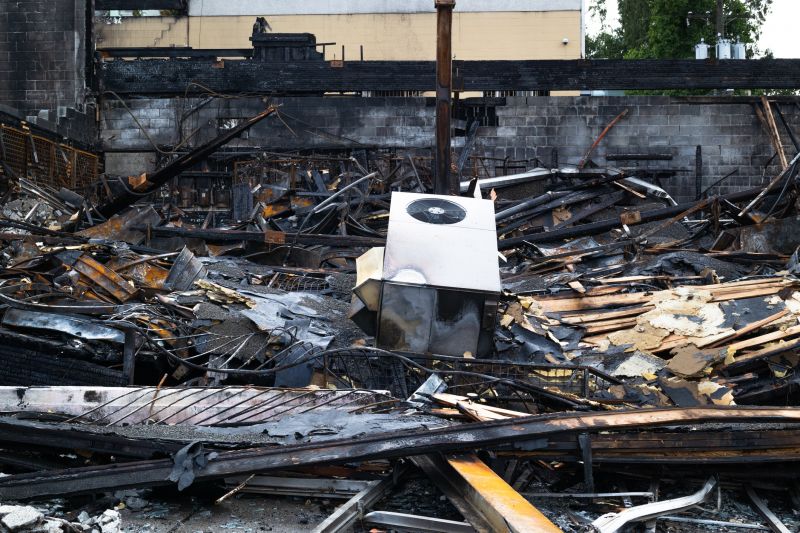Favorite Products For Fire Restoration Projects
Browse popular tools and materials favored by restoration professionals for handling fire damage with confidence.
 Fire restoration projects require specialized products to effectively address the aftermath of fire damage. These products are designed to clean, neutralize odors, repair damaged surfaces, and restore the structural integrity of affected areas. From soot and smoke removal to surface sealing and odor neutralization, the right tools and materials are essential for a thorough and safe restoration process. Proper selection and application of these products can help mitigate secondary damage and facilitate a smoother recovery for homes and businesses impacted by fire.
Fire restoration projects require specialized products to effectively address the aftermath of fire damage. These products are designed to clean, neutralize odors, repair damaged surfaces, and restore the structural integrity of affected areas. From soot and smoke removal to surface sealing and odor neutralization, the right tools and materials are essential for a thorough and safe restoration process. Proper selection and application of these products can help mitigate secondary damage and facilitate a smoother recovery for homes and businesses impacted by fire.
Top Overall Option
Multi-Purpose Fire Damage Restoration Kit
A versatile kit containing a selection of cleaning agents, sealers, and odor neutralizers designed for comprehensive fire damage cleanup. This all-in-one solution provides restoration professionals with essential tools to address soot, smoke, and structural repairs efficiently.
Types of Products For Fire Restorations
Soot and Smoke Cleaners
Specialized cleaning solutions formulated to break down soot and smoke residues from various surfaces, including walls, ceilings, and furniture.
Odor Neutralizers
Products designed to eliminate lingering smoke odors using activated charcoal, ozone, or enzymatic formulas.
Surface Sealers and Primers
Sealants used to prepare surfaces for repainting and to lock in odors, providing a clean base for restoration.
Air Scrubbers and Filtration Units
Equipment that filters airborne contaminants and smoke particles to improve indoor air quality during restoration.
Fire-Resistant Drywall and Patching Materials
Materials used to replace or repair structural elements damaged by fire and heat.
Thermal Barriers and Insulation
Insulation products designed to withstand high temperatures and prevent further damage.
Heavy-Duty Degreasers
Cleaning agents capable of removing tough soot and grease residues from surfaces.
Patching and Repair Compounds
Materials for filling holes, cracks, and restoring damaged surfaces after fire.
Thermal Imaging Cameras
Tools used to detect heat signatures and identify hidden fire damage or hotspots.
Fire-Resistant Coatings
Protective coatings that help prevent future fire spread and damage.
Electrostatic Sprayers
Equipment for applying disinfectants and cleaning solutions evenly across surfaces.
HEPA Vacuum Systems
High-efficiency particulate air vacuums for removing soot and dust particles safely.
Popular Choices
Gels that absorb and neutralize smoke odors in enclosed spaces, often used in difficult-to-reach areas.
Devices that produce ozone to help eliminate smoke odors, suitable for use in unoccupied spaces.
Pre-moistened wipes designed for quick soot removal from small surfaces and fixtures.
Sprays formulated to neutralize smoke odors and prepare surfaces for repainting.
High-capacity purifiers used during the restoration process to improve air quality and reduce airborne contaminants.
Specialized drywall designed to resist fire and heat, used in structural repairs.
Products tailored to restore surfaces affected by smoke and soot buildup.
Sprays that help mask or neutralize persistent smoke odors on various surfaces.
Sealants capable of withstanding high temperatures, used for structural repairs.
Comprehensive kits containing multiple products for a complete fire damage cleanup.
Physical barriers used to contain smoke and soot during cleaning and repair.
In fire restoration, cleaning agents that can break down soot and smoke residues are fundamental. These often include heavy-duty degreasers and emulsifiers formulated to lift stubborn residues from various surfaces. Surface sealers and primers are used to prepare walls, ceilings, and floors for repainting or further treatment, ensuring that odors do not persist and that the surfaces are properly protected.
Odor neutralizers and air scrubbers play a critical role in eliminating lingering smoke smells. These products often contain activated charcoal, ozone generators, or other filtering agents to improve indoor air quality during and after the restoration process. Additionally, specialized repair materials such as fire-resistant drywall, thermal barriers, and patching compounds are necessary for restoring structural elements damaged by heat or flames.
Choosing the appropriate products depends on the extent of the damage, the surfaces involved, and safety considerations. Proper training and adherence to manufacturer instructions are vital to ensure effective and safe use. When selecting fire restoration products, it is important to consider their compatibility with existing materials, ease of application, and the specific needs of the damaged property. A comprehensive approach combining cleaning, repair, and odor control products can help achieve a thorough restoration outcome.
Key Buying Considerations
- Extent of fire and smoke damage to determine necessary products.
- Compatibility of cleaning agents with different surfaces and materials.
- Safety features and instructions for handling chemical products.
- Effectiveness of odor neutralization methods for persistent smells.
- Ease of application and whether specialized equipment is required.
- Durability and fire resistance of repair materials like drywall and coatings.
- Air quality improvement options such as air scrubbers and HEPA filters.
- Availability of comprehensive kits versus individual products.
- Environmental and safety regulations related to product use.
- Cost-effectiveness and long-term benefits of selected products.
- Training or professional support needed for proper application.
- Compatibility with existing building materials and finishes.
- Product shelf life and storage requirements.
- Customer reviews and product performance feedback.
- Manufacturer reputation and product certifications.
